
Station Name: FACIT[Source:
Alan Young]
Gallery 4 additional photos of Facit Station and quarry 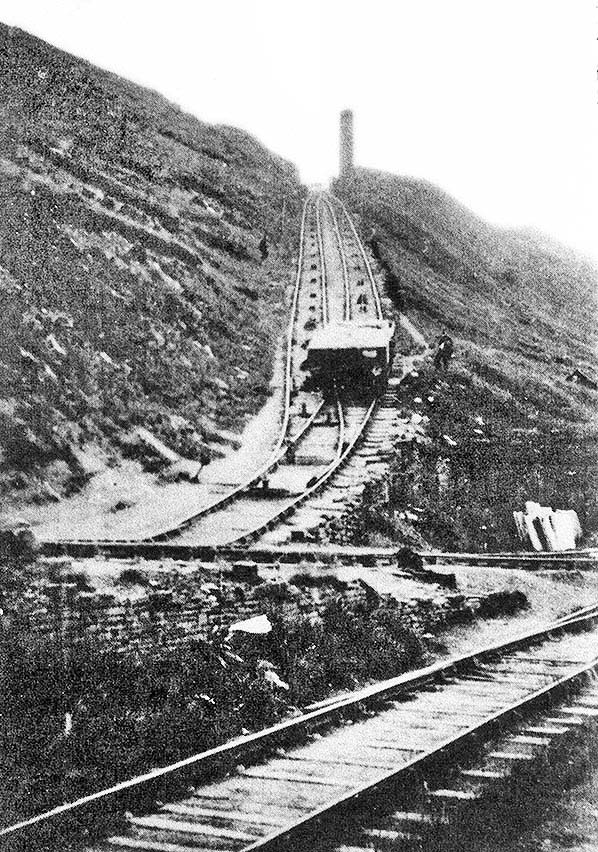 The incline up to Facit Quarries was connected to the stone processing works sidings a short distance north-west of Facit station. Rope haulage was used on the incline, and the incline engine house chimneystack is visible at the summit. In this view a wagon is descending while the balancing empty vehicle is just visible at the top of the slope. To avoid the risk of a serious accident should one of the wagons career down the incline a ‘zig-zag’ was installed at the foot of the slope; wagons descended to the left, then passed to the right, and then needed to travel to the left again to enter the LYR goods yard. There is no record of any mishaps on the incline. This view, looking north-west is undated. The incline was lifted in 1947.
Photo from Whitworth Historical Society 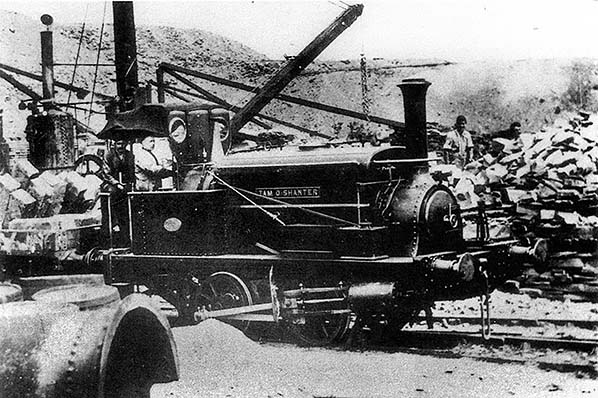 Facit Quarries were high above the railway station and reached by a rope-worked incline. On the moor top ‘Tam o’Shanter’ prepares to haul an LYR plank wagon loaded with dressed sandstone. The loco was built by Manning Wardle (Leeds) in 1890 then rebuilt and out-shopped as a ‘new engine’. She worked at Facit Quarries until 1919 when she was sold to Earl Fitzwilliam’s collieries in Yorkshire. The precise date of this photo is not known.
Photo from Lancashire County Library, Rossendale District and Jeffrey Wells 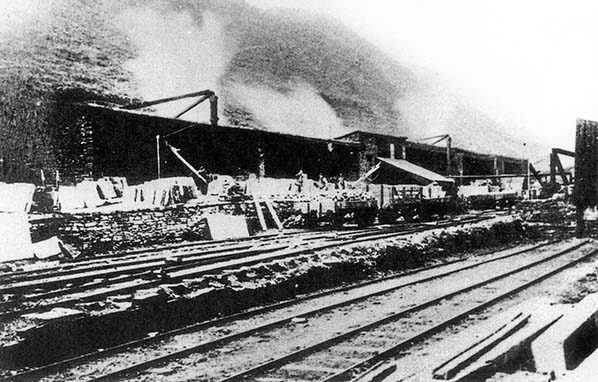
In this pre-1914 photo of Facit stone sidings the view is north-westwards. The running lines are behind the photographer who is about 300yd north of the passenger station. The open-fronted building, right of centre, was used by the masons who cut, trimmed, shaped and loaded the flagstones that had been brought down from Facit Quarries on the moor top via the incline. The small cranes were used when necessary to lift heavy stone blocks. Three LYR plank wagons are seen with one identifiable private owner wagon. The dressed flags would be used for paving, roofs and walls.
Photo from Whitworth Historical Society 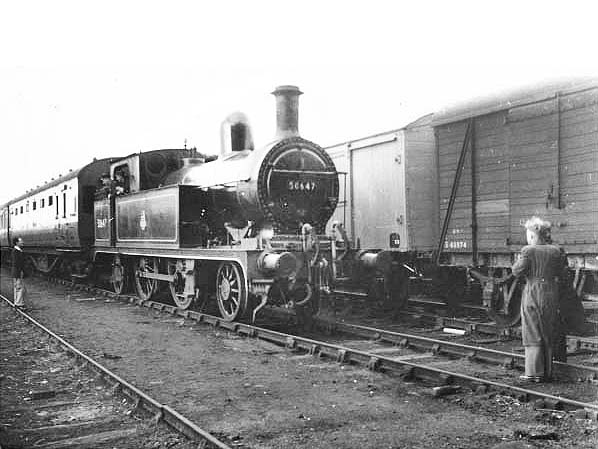 Aspinall 2-4-2T No.50647 is seen at Facit on 12 May 1956. The loco is about to haul the 5-coach SLS/MLS ‘Old Manchester Rail Tour’ back to Rochdale. No.50647 was built at the Lancashire & Yorkshire Railway’s Horwich works in September 1890. Numbered 1052 by the LYR she was re-numbered 10647 by the LMS and 50647 by British Railways. She remained in service until February 1959 when she was withdrawn from 26C, Bolton shed. In November 1959 the loco was cut up by Motherwell Machinery & Scrap, Inslow Works, Wishaw.
Photo by Ian G Holt
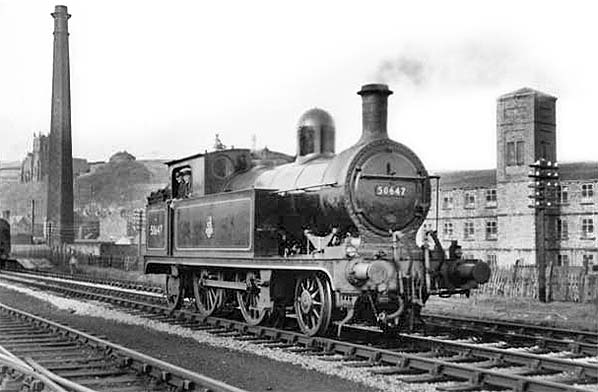 Aspinall 2-4-2T No.50647 is seen at Facit with ramp of the up platform of the station, the chimneystack of Spodden Mill and the turret of Whitfield Mill in the background. The loco will soon haul the 5-coach SLS/MLS ‘Old Manchester Rail Tour' back to Rochdale on 12 May 1956.
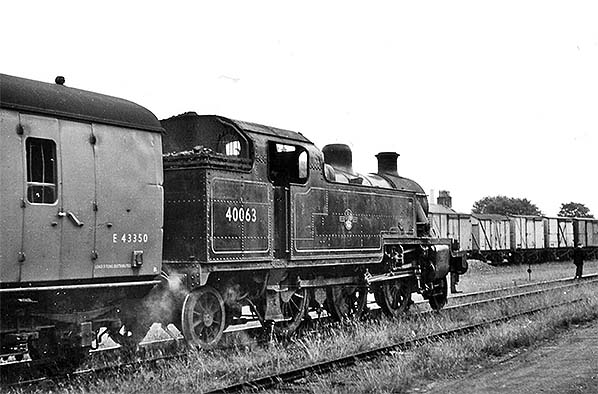 On 28 July 1962 No.40063 is in a siding a Facit ready to haul the RVRS ‘Old Manchester Rail Tour’ back to Rochdale. The Fowler-designed 3P 2-6-2T built at the LMS Derby works in September 1932. Only six weeks after this railtour she was withdrawn from 26A, Newton Heath shed, on 8 September 1962 and cut up the following month at Horwich works.
Photo by Ian G Holt 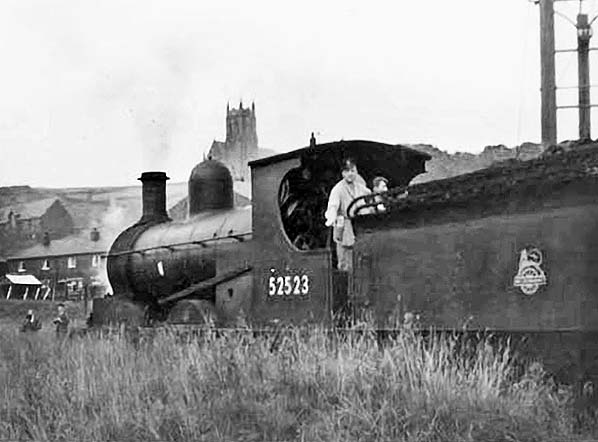 On 28 July 1962 the Roch Valley Railway Society’s ‘Salford Hundred Rail Tour’ visited Facit, hauled there by No.52523 and returning to Rochdale behind No.40063. In this north-eastward view No.52523 is arriving at Facit. In the background is the tower of St John’s church
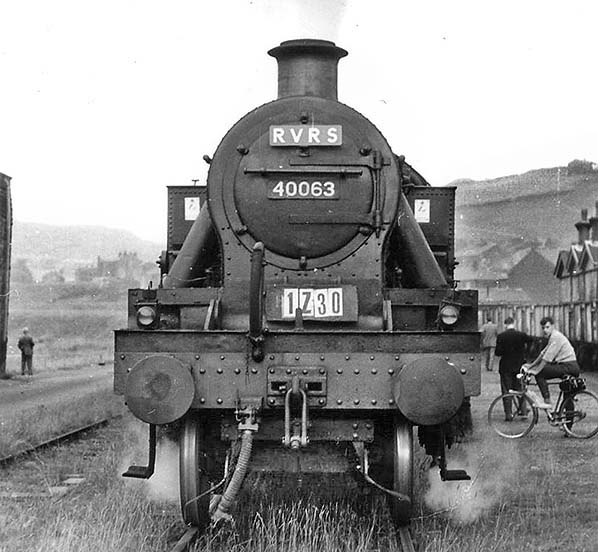 On 28 July 1962 No.40063 is in a siding a Facit ready to haul the RVRS ‘Salford Hundred Rail Tour’ back to Rochdale. The Fowler-designed 3P 2-6-2T built at the LMS Derby works in September 1932. Only six weeks after this railtour she was withdrawn from 26A, Newton Heath shed, on 8 September 1962 and cut up the following month at Horwich works.
Photo by Ian G Holt 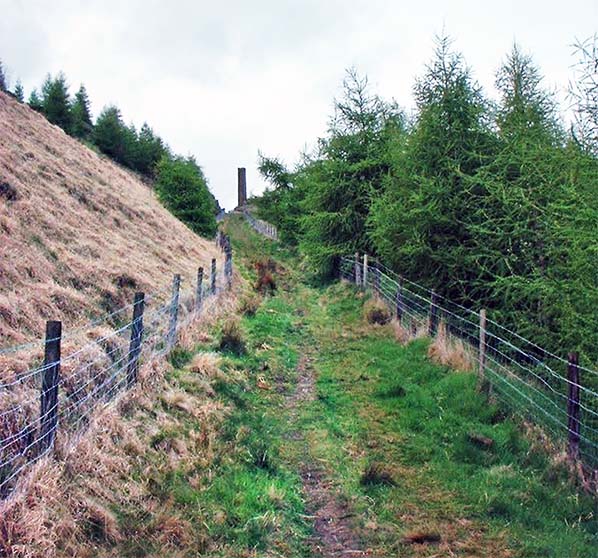 The Facit Incline was built in 1871 to connect Facit Quarry to the to the processing site located in the valley bottom adjacent to the Lancashire and Yorkshire main line. The incline was abandoned in 1946 but the lower finishing works continued to saw and smooth stone for flags un till the mid 1960s. The late 19th century 11.3 metre high stone chimney stands half way along the incline. The chimney was part of a flue system from the engine sheds that provided the power for the machinery that polished, cut and planed stone products. Restoration of the chimney was completed in 2009. It can be reached from the newly created cycleroute NCR 92 from Britannia to Whitworth. This is known as the Valley of Stone Greenway.
Photo by Howard C Harrison
|

 Home Page
Home Page